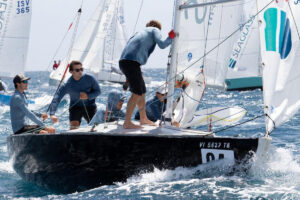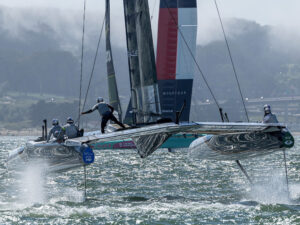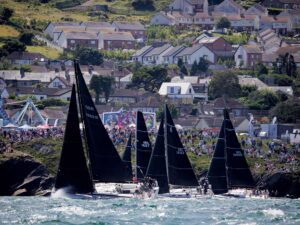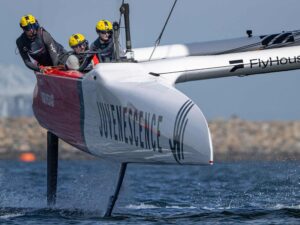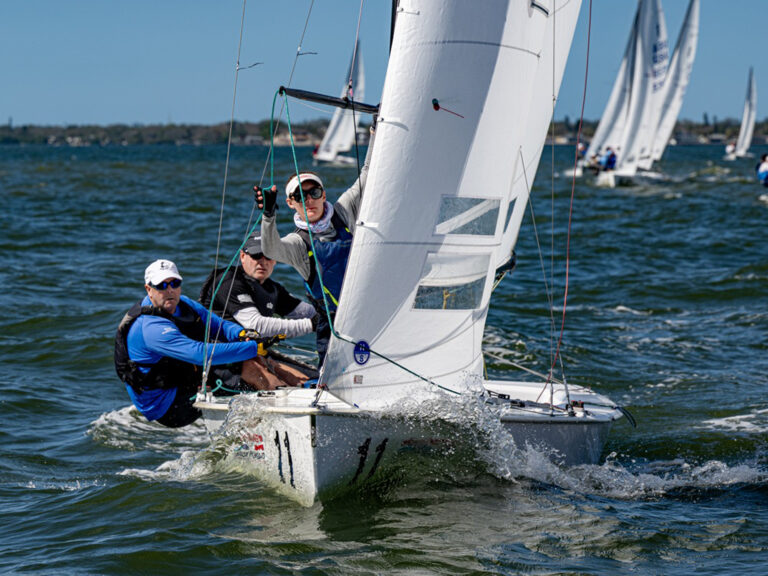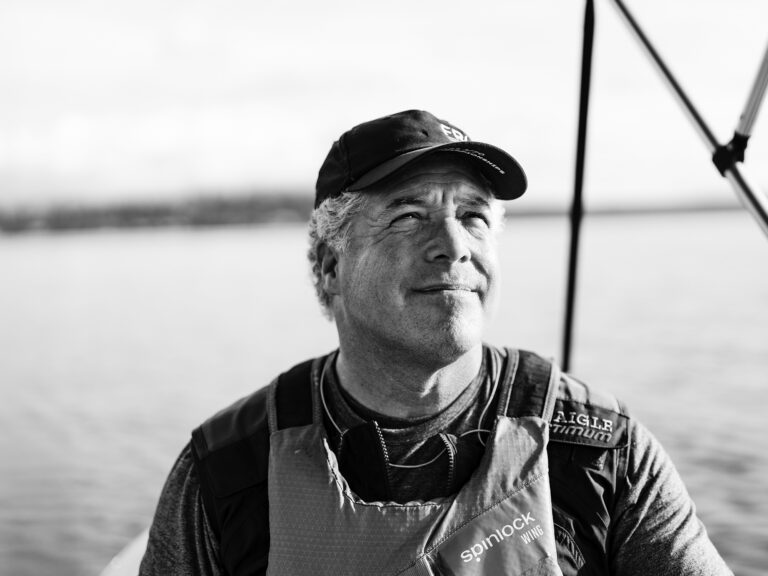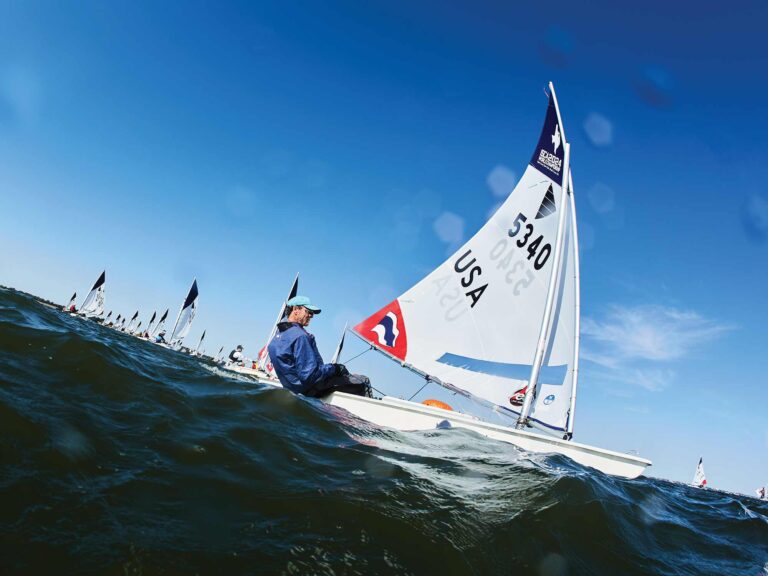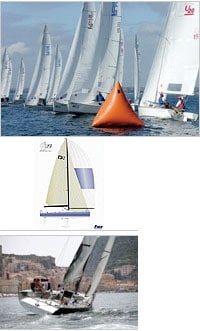
Sailing World eNews June 26
Sign up for the SW eNewsletter here!First BeatUncertainty for Owners, Classes After Fire at Abbott BoatsAbbott Boats Inc., the Sarnia, Ontario-based builder, was destroyed by fire over the weekend. The blaze, which leveled two separate buildings, destroyed tooling for a number of one-design classes. Worse, however, was far-reaching impact on the Abbott family-run business, which has been in operation for more than 50 years.According to reports in the The Sarnia Observer, the cause of the fire is still unknown, and the investigation had been hampered by continual flare-ups earlier this week. The Observer also reported that all five of the city’s fire stations responded to the fire shortly after 7 p.m. on Saturday. As the fire consumed one building and several boats, residents in nearby apartments were evacuated. A second and separate fire, reportedly upwind of the first, then broke out early in the morning, leveling the woodworking and finishing shop.”My molding shop was fire No. 1,” said Abbott when reached by phone on Thursday. “All my molds are gone-Solings, Ynglings, Martin 16s, Ultimate 20s, and Wayfarers. My 420 molds, too. We got hit hard.”The second fire took all the production I had ready for delivery. Finished boats, my assembly shop, my woodworking shop…everything. The building burnt from front to back.”Abbott says he was near the facility on late Saturday afternoon, helping Brad Boston pull out a brand new Ultimate 20, bound for the North Americans in Oregon. Today, he’d set up office at a nearby fire station and could not comment on the investigation, saying, “I can’t tell you what they’re doing kicking around in what’s left out there.”This is very hard. Everyone says we have to keep going, but we’re a tight family business, and a lot has to be considered now. The Ultimate 20 group has told me that they don’t want to loose their builder, and they’ll do anything they can to have me building again as fast as possible. That show of support really helps shape the future for us, but we have to assess everything, not just for ourselves. Our customers know they weren’t just buying boats from us, they were part of the family business.”One customer, speaking off the record, said the class was devastated by the news, but was waiting to hear what Abbott would do before making any decisions.Jeff Canepa, of SailSports Inc., which markets the Ultimate 20, says he’s doing everything he can to get Abbott back online. “We still have all the plugs [in California], and our builder in Italy has templates. They’re already making another set, and, between Italy and myself, we’ll have everything Bill needs to start again. I told him yesterday that whatever happens, whenever he’s ready I’ll send him everything he needs to be back into production before then end of the year.”Abbott says his own office is still standing, only singed on the outside, and that it is somewhere from which to start, but he’s still dwelling on what he and his family have lost. “I think the hardest thing is that our lives are there; our personal boats that we just brought in to get ready for our own sailing season-they went. My racing stuff went, my new Soling went, all my rigs. There were my duck decoy molds, too. All of it is hard hitting. Everybody’s home now, we’ll be putting on our work boots, and regrouping.”-Dave ReedGear UpThe First ORC GP42 Hits the WaterThe popularity of the box-rule TP 52 class inspired the Offshore Racing Congress to create box-rule classes for boats 26, 33, and 42 feet in overall length last year. Until now, all we’ve seen of the 42-footer have been designer’s drawings, but this week, the first ORC GP42 will be sailing off Valencia, Spain. Designed by Farr Yacht Design for Italian owner Filippo Faruffini, this new tiller-driven, carbon-fiber (foam core, honeycomb not allowed) GP42 may be the leading edge of what designers and builders hope is a groundswell of grand-prix owners eager to compete under a new grand-prix rule.The GP42 box rule guarantees high performance by specifying light displacement, max keel weight, large sail area, and low crew weight, and does it more aggressively than the TP 52 rule. “The places where the GP42 is different,” says Jim Schmicker, senior naval architect at the Farr office, “are the sail area, which is relatively larger, and crew weight, which is quite a bit less for its size. In fact, it allows for less crew weight (1,587 lbs.) than a Farr 40, only eight or nine guys. Weight-wise, it doesn’t give you a lot on the rail, and numbers-wise, it doesn’t give you a lot of people to handle the boat.” Sounds familiar, doesn’t it Volvo Ocean Race fans?One of the major thrusts of a box rule is to produce boats with long competitive lives. In the TP 52 class, with the exception of Rosebud, which picked its venues carefully, that hasn’t been the case. Second or third-generation boats built for the East Coast of the United States aren’t competitive with fourth and fifth-generation boats built for the Mediterranean. Thanks to a tighter rule, that may not be the case with the GP42s. “You’ll see differences in hull volume forward for boats that want to go offshore, but you won’t see as much change in beam,” says Schmicker. “They’re quite dinghy-like in their hull shape, pushing the waterlines out and the hulls up to get power with the light crew weight. These boats are going to be quite quick.”-Tony BessingerSign up for the Sailing World eNewsletter at

